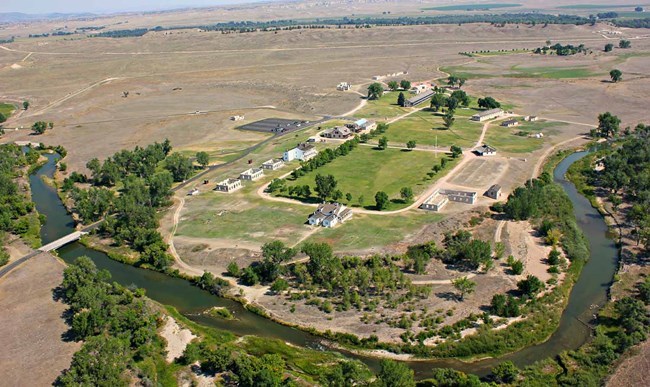
NPS Photo / John Gilpin
Overview
The classification of the vegetation at Fort Laramie National Historic Site resulted in 16 types being defined, including one woodland type, one shrubland type, 11 herbaceous types, and three sparsely vegetated types. Areas placed within these types are dominated by exotic and/or invasive species.The Fort Laramie National Historic Site Vegetation Inventory Project delivers many geospatial and vegetation data products, including an in-depth project report discussing methods and results, which include descriptions to vegetation associations, field keys to vegetation associations, map classification, and map-class descriptions. The suite of products also includes a database of vegetation plots, and accuracy assessment (AA) sites; digital images of field sites; digital aerial imagery; digital maps; a contingency table listing AA results; and a geodatabase of vegetation, field sites (vegetation plots, and AA sites), aerial imagery, project boundary, and metadata.
Products
The products of vegetation mapping projects are stored and managed in the National Park Service's Data Store, a repository for documents and publications relating to park resources. From the highlighted items below, click on the type of information you are looking for.
Last updated: October 2, 2018
